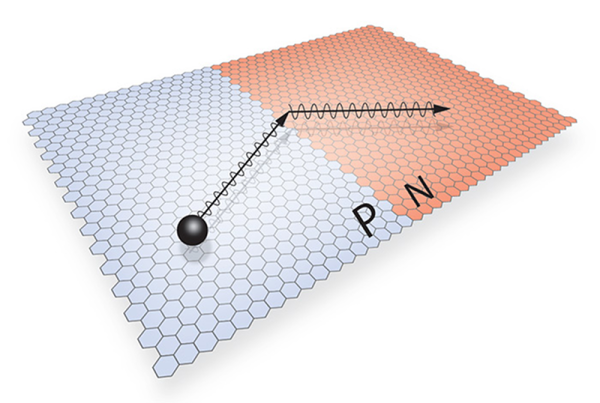Researchers recently observed negative refraction of electrons in graphene PN junctions. The creation of PN junctions in graphene is quite interesting, itself. Negative refraction isn’t a new idea. It was first proposed in 1968 and occurs when a wave bends–or refracts–the opposite way at an interface compared to what you would usually expect. In optics, for example, this can allow for refocusing divergent waves and has been the basis for some proposed invisibility cloaking devices.
In theory, negative refraction for electrons should be easy to observe at PN junctions, but in practice, the band gap voltage causes most electrons to reflect at the junction instead of refract. However, a graphene PN junction has no band gap voltage, so it should be ideal. However, previous attempts to find negative refraction in graphene were not successful.












